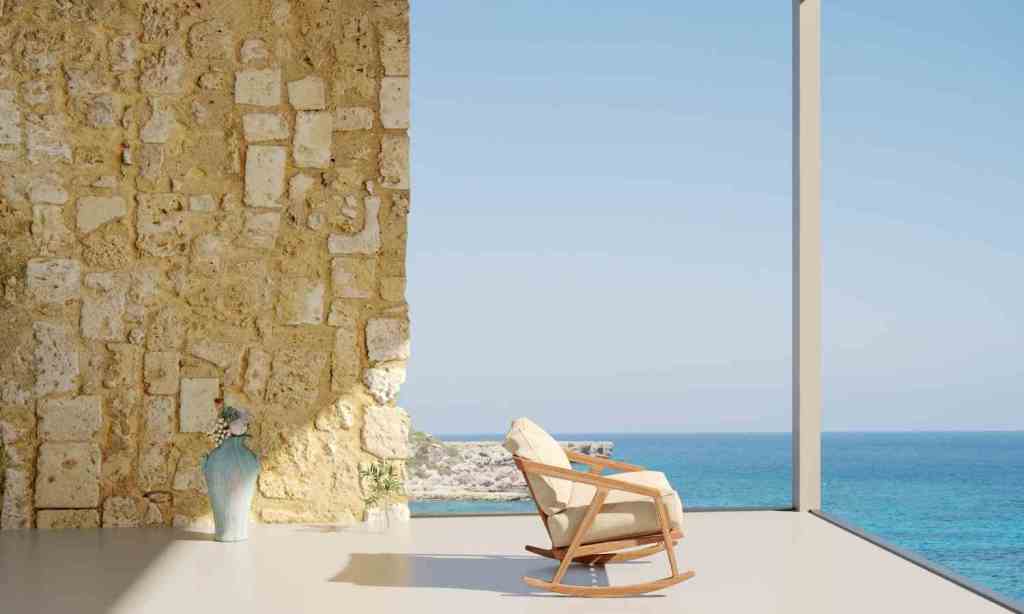The Latch has partnered with Suncorp Bank to deliver sustainability content that helps helps our readers drive positive action in their every day lives.
You’ve probably heard of the #capsulewardrobe trend on TikTok, where content creators share five to seven statement pieces that offer all-year-round outfits. It’s a way of keeping the amount of stuff you buy to a minimum and investing in pieces that suit many occasions. Well, we’re taking this one step further by going from closet to apartment and applying the “capsule” ethos to our entire homes.
Capsule homes (also known as Pod Homes, EcoCapsule, and MiniMod) focus on what’s essential, functional and foundation, and little else. They usually tend to go against the grain when it comes to expansive interior trends that create space and enhance flow in the home. The focus is instead on being minimal, cost-effective and eco-friendly.
To get some suggestions on how we can get started creating a capsule home, we spoke to Camilla Ingall, Interior Stylist and Founder of Unfolded. She imagines capsule homes to be best suited for DINKS (Double Income No Kids families), farmers, retirees, and single people. However, it could also be for anyone who is organised, tidy and enjoys the simpler and smaller things in life.
If you don’t like being surrounded by stuff or if you’re trying to consume less and be a little bit more eco-conscious, you’ll probably enjoy this trend. If you’re considering a lifestyle change or looking to be more environmentally friendly, a capsule home could be a way to live lighter and with less clutter.
Start With What You Have
A good guide to decorating a capsule home would be looking at what you have in your home already. If you have just moved into a new apartment and are starting from scratch, taking note of key areas of the house that could affect your furniture choices — like a big, empty wall, a long hallway, natural lighting and the climate around your home — is a good starting point.

Camilla suggests using DIY floor plans to first decide on a layout that would best suit your apartment shape. This creates a structure for where things will go and what will suit the space. Following that, decide which materials would match the layout. If you are unable to do this by yourself, you could also engage either an architect, designer or builder who specialises in this field to guide you through the steps.
Identifying the layout and materials best suited for your home helps you to understand the potential style and personality of your capsule home. If you find that many items in your current home just don’t speak to you anymore, you could consider repurposing them; like giving a dresser a fresh coat of paint or selling them online.
Natural Materials in New Ways
Staples in your wardrobe will look like a good-fitting pair of denim, a classic white t-shirt and reliable, long-lasting shoes for walking. What would this translate to in a home?
Camilla suggests investing in natural materials like bamboo, sandstone, straw bale and recycled glass, as it’s a good way to introduce eco-friendly elements into your home. These materials could be used to make countertops and tiles, or even the fabrics that your furniture is made with.
Bamboo, for example, is a fast-growing plant across tropical areas that is a strong and durable substitute for wood in chairs, shelving and tables. Straw bale, which is made from grain crops (like wheat), is a good option for walls and insulation. If you fancy a bit more of a classy look, you could also consider recycled glass as glass is an example of a material that can be recycled completely and endlessly without loss in quality or purity.

The fun part about building a capsule home is re-imaging ways to repurpose materials. Camilla shares an example of an inventive design using cork panels in an office space. This can be used in a similar way in a capsule-style home, as a bedhead or in a small office nook, where you can pin your to-do list to your custom-built wall.

Tread Lightly With Trends
Trends are notorious for creating impulsive demand. We’ve all been there. But instead of jumping onto the bandwagon immediately, try to resist the desire by taking note of the elements of the item you’ve almost put into your cart.
Consider switching your media appetite to look out for items like upcycled, recycled and repurposed furniture, where materials like plastic, construction waste, and wood that would have otherwise gone to landfill, could end up in good shape in your homes. Similarly, sourcing recycled fabrics like recycled wool, nylon and polyester could be options for fabrics used within your home, for bedding, curtains and couch covers.
The basis for a capsule home stems from the idea that life can be lived lightly and gently. The same should apply to the process of setting up the capsule home, so skip out on the stress, tread lightly and enjoy the process mindfully.
Read more stories from The Latch and subscribe to our email newsletter.
Any representations, views, or opinions contained in this article are those of The Latch and do not reflect those of and are not endorsed by Suncorp Bank.







